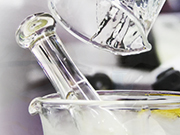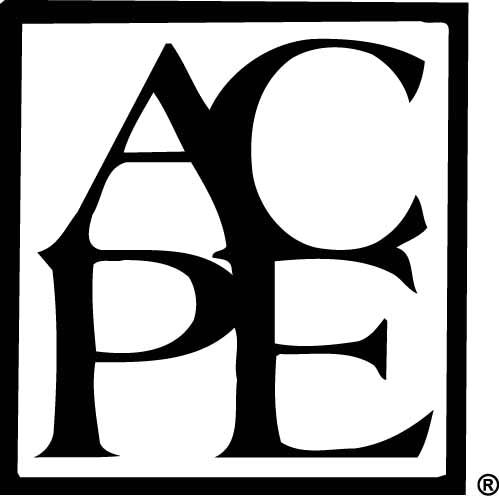The Science of Pharmaceutical Compounding: Non-sterile Training - Home Study
 | Great news! In light of the recent revisions to USP standards, we will be updating the home study to reflect these changes, in order to provide you with the resources needed to maintain compliance. You may enroll in the home study today and will be notified once the updated materials are available. |

Learning Objectives | Contributors
| This home study serves as a prerequisite to the live activity, The Science of Pharmaceutical Compounding: Non-Sterile Training. While attendance at the live event is not mandatory to receive home study CE credit, participation in the live event will afford the participant an opportunity to practically apply the activity’s core concepts and to practice, under expert supervision, the preparation and quality control verification procedures related to a broad range of non-sterile dosage forms. |  |
Please note: If you are attending the live event, your home study can be accessed by navigating to the course page for your specific live event location & date. The version of the home study on this page is for those who are not attending a live event.
This knowledge-based activity will provide compounding pharmacists and technicians with the necessary understanding of how to manage a non-hazardous and hazardous drug compounding facility, while preparing therapeutic non-sterile dosage forms relevant to today’s medical and market needs.
The activity is centered on core concepts, providing a strong foundation to follow for the compounding pharmacist and technician. These concepts include being a “STAR” (to be morally, ethically, politically, legally, and clinically sound in one’s decision-making), balancing stability with suitability (finding balance between formulation chemistry and dosage form suitability for the patient), compounding with appropriate compromise (acknowledging that with each new route of delivery and delivery system there are potentially new side effects that need to be addressed), compounding by composition (an in-depth look at the chemistry of solutions and dispersions in the form of suspensions and emulsions), and balancing efficiency with effectiveness (doing the right thing right as it applies to business development).
Activity content is subdivided into a unique system, referred to as System P, which is a categorical breakdown of all required standards of practice: Personnel, Property, Procedure, Process, Preparation, and Patient. Each category is defined and detailed. This system places emphasis on quality assurance and quality control through the implementation of standard operating procedures.
The participant will also be introduced to process development, which leads to the establishment of pharmacy practice-specific master formulation records. A master formulation record template is also introduced and serves equally well as a process development record and compounding record that can be implemented in everyday practice. Pharmaceutical calculations are presented in detail, providing even greater assurance of quality control and quality management during the compounding process.
A review of physiological pathways helps the compounder to appropriately select delivery systems that will optimize bioavailability; the optimization of drug absorption without undue deleterious side effects being the goal. Once routes of delivery and delivery system options are decided upon, excipient selection and their use in the compounded mixture are reviewed. Finally, the preparatory procedure itself is addressed with direct relationships to dosage form composition. Generalized preparatory procedures related to combinations of routes of delivery, dosage form, preparatory state-of-matter (solid, semi-solid and liquid), and final state-of-matter are presented.
The core concepts and the components of System P, when combined, make for a formidable infrastructure upon which to establish a new, or redefine an existing, compounding practice.
Intended audience
Learning Objectives
FOR PHARMACISTS:
- Discuss quality and integrity as they relate to a non-sterile compounding practice by being morally, ethically, politically, legally, and clinically sound in one’s decision-making.
- Review the need to find an appropriate balance between dosage form stability and its suitability for a patient.
- Explain the concept that for every customized dosage form, there is an expected and appropriate compromise related to that dosage form.
- Outline various dosage form compositions in terms of solutions and dispersions (suspensions and emulsions).
- Repeat pharmaceutical calculations related to specific dosage forms and preparatory procedures.
- Identify excipients and their function(s) in non-sterile dosage form-related delivery systems.
- Identify excipient and active ingredient characteristics that will result in stable and suitable dosage forms.
- Identify laboratory practices, procedures and preparatory techniques related to the compounding of non-sterile dosage forms.
- Describe a broad range of non-sterile preparatory procedures represented by commonly compounded dosage forms.
- Express requirements surrounding the needed standard operating procedures, drawn from an understanding of the requirements under the United States Pharmacopeia (USP) and the categorical breakdown of System P.
- Describe United States Pharmacopeia standards of practice related to non-hazardous and hazardous drug compounding, covering USP Chapters <795>, <800>, <1160>, <1163>, and <1176>.
- Describe facility design, maintenance, and monitoring requirements for non-hazardous and hazardous drug compounding.
- Identify deactivation, decontamination, disinfection, and cleaning procedures for non-hazardous and hazardous drug compounding.
- Review required personal protective equipment for non-hazardous and hazardous drug compounding.
- Recall general personnel roles and responsibilities, including medical surveillance and a hazardous drug management information program.
- Outline multiple steps related to process development that leads to the establishment of a master formulation record.
- List the requirements of a master formulation record and compounding record.
- Relate the balancing of efficiency (doing the right thing) with effectiveness (doing the thing right) from a business perspective.
- Recognize, from a business perspective, how to first plan your market, and then market your plan.
FOR TECHNICIANS:
- Relate quality and integrity to the day-to-day operations and personal functions of a technician within a non-sterile compounding practice.
- List factors that contribute to the balance between dosage form stability and its suitability for a patient.
- Explain the concept that for every customized dosage form, there is an expected and appropriate compromise related to that dosage form.
- Relate dosage form composition differences and their related preparatory procedures, specifically solutions and dispersions (suspensions and emulsions).
- Explain pharmaceutical calculations, in support of a performance checking system, between pharmacist and technician, related to specific dosage forms and preparatory procedures.
- Recognize the relevance of excipients and their function(s) in non-sterile dosage form-related delivery systems.
- Recognize the relevance of excipient and active ingredient characteristics that will result in stable and suitable dosage forms.
- Describe laboratory practices, procedures, and preparatory techniques related to the day-to-day activities of a compounding technician, and to the compounding of non-sterile dosage forms.
- Identify non-sterile preparatory procedures related to compounded dosage forms.
- Relate standard operating procedures currently in existence in a compounding practice to the requirements of the United States Pharmacopeia.
- Outline standard operating procedures related to non-hazardous and hazardous drug compounding, covering USP Chapters <795>, <800>, <1160>, <1163>, and <1176>.
- Outline maintenance and monitoring requirements in day-to-day practice, related to non-hazardous and hazardous drug compounding.
- Recognize the importance of deactivation, decontamination, disinfection, and cleaning procedures for non-hazardous and hazardous drug compounding.
- Outline the use of personal protective equipment for non-hazardous and hazardous drug compounding.
- Outline general personnel roles and responsibilities, including medical surveillance and a hazardous drug management information program.
- Repeat written procedures related to process development documents that lead to the establishment of a master formulation record.
- List the requirements of a master formulation record and compounding record.
- Recognize the importance of a pharmacist’s need to balance efficiency with efficacy from a business perspective, as it applies to the day-to-day activities of a compounding practice.
- List elements of business practices as they relate to planning the development of a market, and then marketing that development plan.
Editors
 NEIL COHEN, BSc NEIL COHEN, BScCE Program Developer Disclosure: None |  |
CONTRIBUTORS:
|
This learning activity has received financial support from MEDISCA Inc. in the form of an educational grant.
Total CPE Credits (home study): 24 CPE Hours = 2.4 CEUs
Joint Providership Status (CPE Consultants, LLC / LP3 Network)
Home study activity type: Knowledge-based
Home study UAN: 0864-9999-18-041-H07-P/T for pharmacists and technicians
Home study CPE credits: 24 CPE hours = 2.4 CEUs
Release date: April 20, 2018
Expiration date: April 20, 2021
To receive CPE credits for the home study, participants must complete a learning assessment with a score of 70% and submit a completed evaluation.
 | CPE Consultants, LLC is accredited by the Accreditation Council for Pharmacy Education as a provider of continuing pharmacy education. |
Price
There are no refunds, returns, or transfers upon purchase of the home study.

 Facebook
Facebook X
X LinkedIn
LinkedIn Forward
Forward
